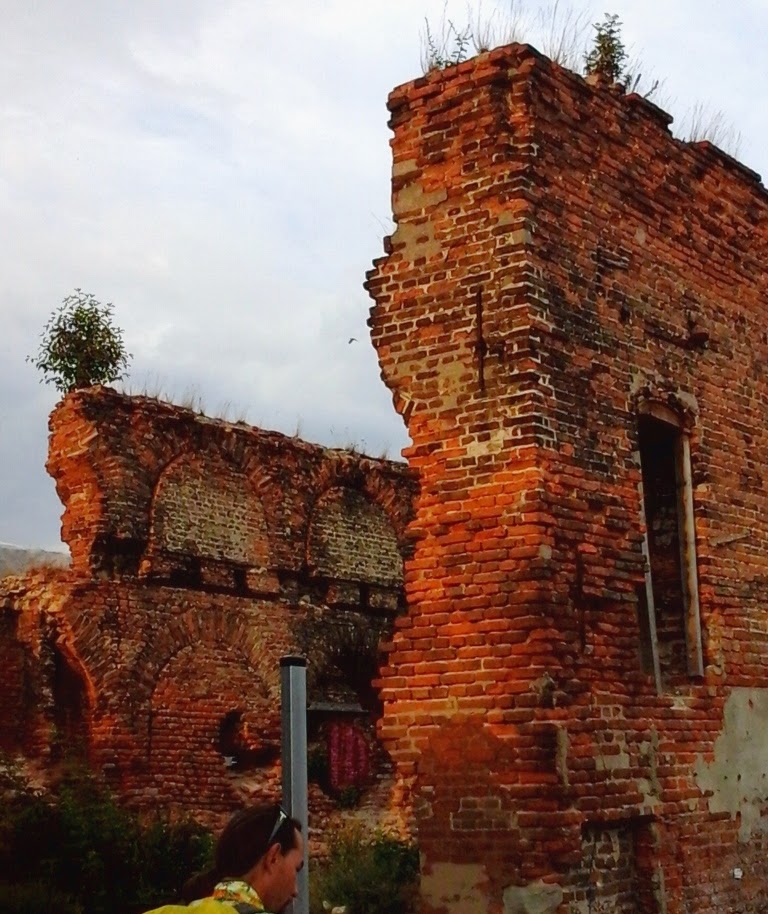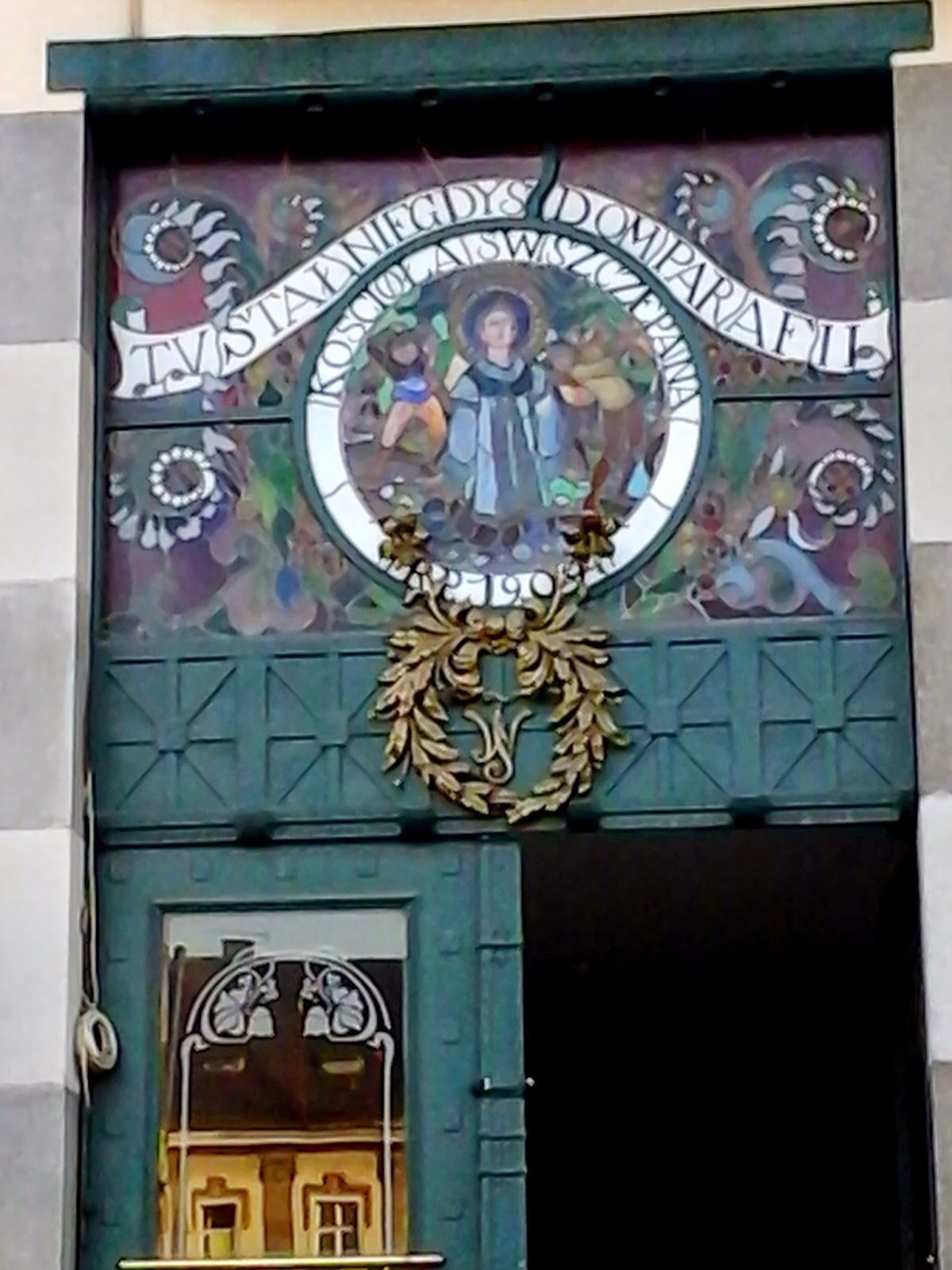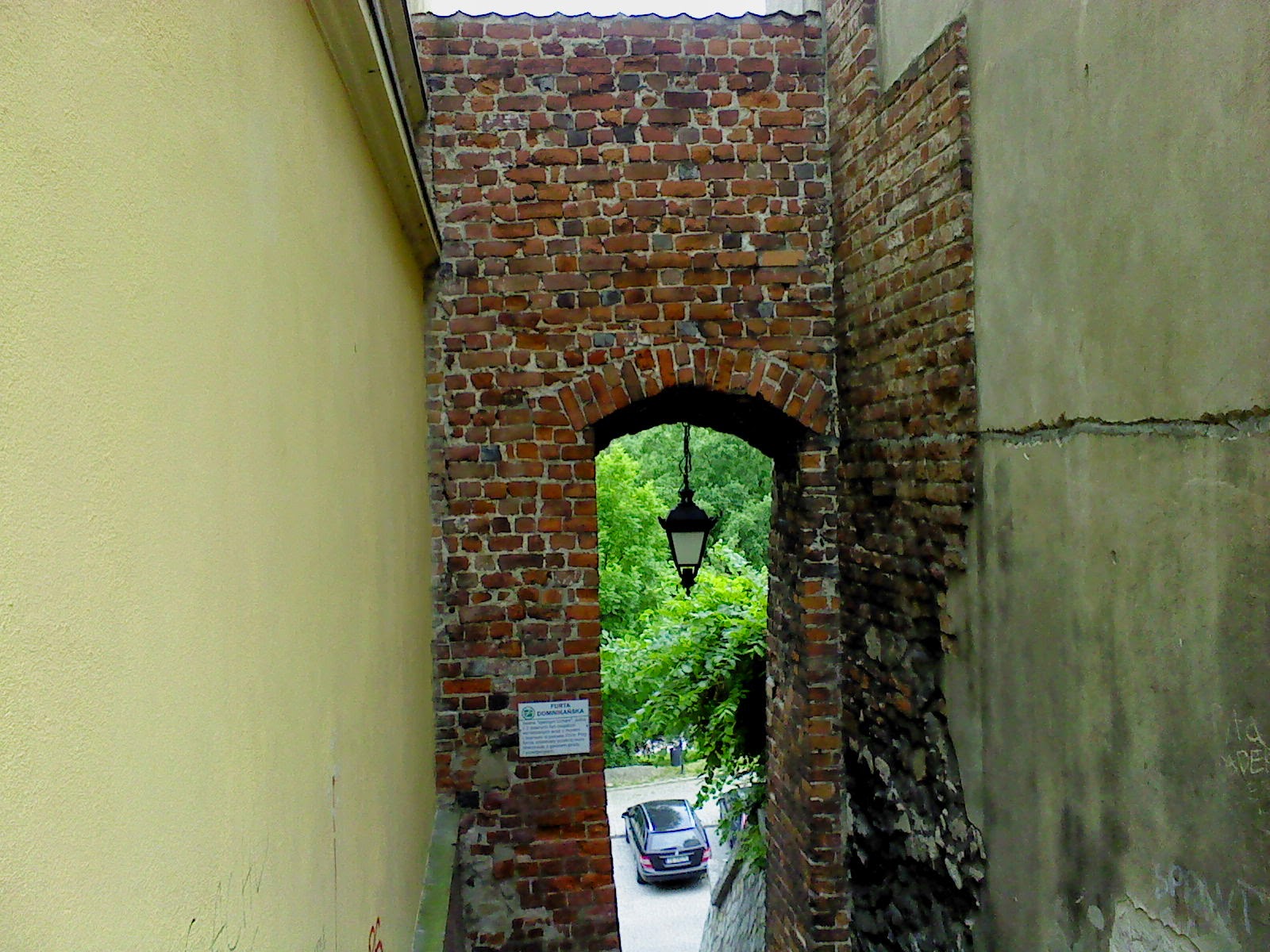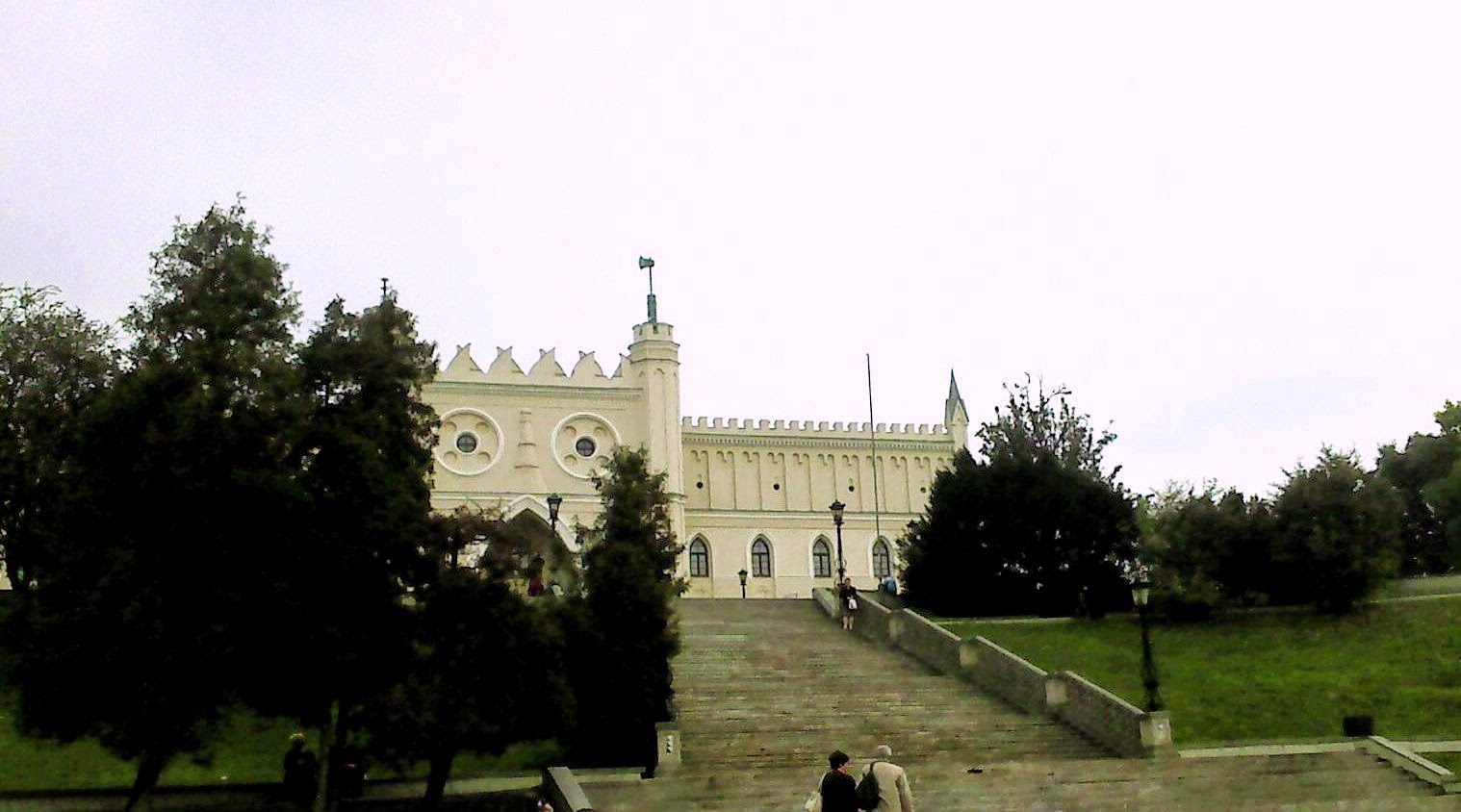Last summer I had the pleasure of guiding several groups across Poland; two of them for the French-speaking visitors. The range of the visits was pretty big yet it seemed to be focused more on the south-eastern parts of Poland. The usual reason is the popularity of such destinations in Poland like Cracow or Auschwitz.
However, my foreign tourists were acquainted with different regions and their particular historic sites which included the Hanseatic city of Gdańsk in the North
1. Gdańsk
 |
| The Royal Chapel against St. Mary's Church (the biggest brick church in the world) |
.jpg) |
| The river Motława (Mottlau) and the Grand Crane from 14 c. |
.jpg) |
| The souvenir from the Soviets who destroyed the city of Gdańsk in March 1945 |
.jpg) |
| Danzig female citizens against the Green Gate |
.JPG) |
| Giant drums - opening of the St. Dominic Fair |
.JPG) |
| The Filharmonic Hall directly on the Motlawa River |
.JPG) |
| The Filharmonic Hall in the former power plant |
2. The Teutonic relic in Malbork - the castle of Marienburg:
 |
| Central heating |
 |
| Cannon balls |
 |
| elements of the castle complex |
3. The medieval city of Toruń (Thorn)
 |
| The view from the river Vistula |
 |
| Relics of the ramparts with modern art additions |
 |
| One of the streets paved with the coats of arms of other Hanseatic cities |
 |
| Königsberg |
 |
| The ceiling of the St. Johns' Church |
 |
| Astronomic Observatory of the Copernicus University in Toruń |
4. The capital city of Great Poland (Großpolen) - Poznań
 |
| The Townhall with two goats appearing at noon |
 |
| Town Hall |
|
 |
| The Poznań Art Nouveau - one of many residential houses |
5. The capital city of Lower Silesia (Niederschlesien) - Wrocław (Breslau)
 |
| The Love Bridge on the Odra River |
 |
| One of the city pavements |
 |
| The Wrocław Town Hall |
6. The royal city of Kraków (Cracow)
 |
| Wawel - the Royal Castle |
 |
| The Cracow Art Nouveau |
 |
| The relic of an entrance |
 |
| One of many such sights |
 |
| Some views off the beaten track |
 |
| A very common sign in Kraków - the Saints' Trail |
 |
| The famous historic Cloth Market |
 |
| in the city |
 |
| The old university - Collegium Maius |
7. The nazi camp of Auschwitz (Oświęcim)
 |
| The Death Wall |
.jpg) |
| The Israelis usually walk about with their own guides, which is not allowed for any other groups |
 |
| Birkenau |
 |
| Birkenau - the latrine |
8. A day trip off Kraków into the mountains:
 |
| The border river of Dunajec - on the frontier with the Slovak Republic |
 |
| A trip by special boats |
 |
| One of many mountain spas |
 |
| The place where the healing source water is served |
9. Once in Kraków, a visit to the salt mine is a must:
 |
| The church located deepest in Europe - 80 m under the earth level |
 |
| made all of salt crystals |
 |
| The wooden supports |
10. The tiny Old Town in Sandomierz
 |
| a secret passage in the ramparts for the medieval monks |
 |
| The only place in Poland where you can buy the striped flint |
 |
| A very interesting painting in the local cathedral |
 |
| The painting described above |
 |
| St. John Nepomuk at the foot of the cathedral |
11. The capital of Eastern Poland - Lublin
 |
| Old Town - The Lublin version of Renaissance |
 |
| In Lublin, the Old Town is tiny but ORIGINAL - not destroyed in WW II |
|
 |
| Medieval chapel with Bysantine frescoes in the Lublin Castle |
|
 |
| A gothic ceiling in one of the churches |
 |
| Lublin Castle |
Lublin is home to once the only Catholic University in Poland.
 |
| a view into the yard |
|
|
|
 |
| JP II used to be the lecturere here |
|
|
 |
| the entrance |
12. A short trip outside Lublin brings you to a magnificent Zamoyski family Palace in the village of Kozłówka
|  |
| A peacock in the garden against the museum of Socialist Art | | | | |
|
|
 |
| The interior |
 |
| The park |
13. The Reneissance former private town of Zamość (Zamo)
.jpg) |
| The Reneissance ceiling in the Zamośc Catahedral |
14. A small border town of Włodawa, located directly on the wild Bug river. The town featured the existence of three religions that used to coexist before the war. Now only two remained.
 |
| The frontier on the Bug River with Belaruss, in the background the towers of the catholic baroque church run by the convent of the Paulins |
 |
| The st. Lodovico church |
.jpg) |
| The church inside |
 |
| the Russian orthodox church |
.JPG) |
| The synagogue - now a museum |
15. On the way to Warsaw it is possible to stay in a little town located on the Vistula River; a popular destination for the artists who run there their small art galleries.
Kazimierz nad Wisłą
.jpg) |
| The town was founded in the 14 c. by the king of Poland, Kazimierz Wielki - Casimir le Grand (the Great), the one who first invited the Jews to Poland from all over Europe where they had been persecuted |
.jpg) |
| The catholic church in Kazimierz |
.jpg) |
| A fairly new Hotel Kazimierz Wielki |
.JPG) |
| The Jews come there often |
16. The capital of Poland - Warszawa (Warsaw).
 |
| The modern look |
 |
| The sunrise view of the centre of the city with its infamous Palace of Culture presented by the "Soviet Brothers" after the WW II, now surrounded by the latest style office buildings trying to hide the controversial gift |
.jpg) |
| Museum of Warsaw Uprising 1944 |
 |
| The only piece of the original Warsaw Getto wall |
 |
| The Frederic Chopin Museum |
 |
| It is possible to order a private Chopin piano music recital in the Music Library and Printing House |
 |
| The Palace on Water in the Łazienki Park |
 |
| The Wilanów Palace in Warsaw |
 |
| And the beautifully kept park |
 |
| around the palace |
 |
| The view down the hotel - the central roundabout in the city centre |
 |
| The Royal Castle of Warsaw |
 |
| The gold in the Royal Castle |
 |
| The relic of WW II - a piece of the "Goliat" German remote control tank caterpillar |
17. A day trip off Warsaw. The Arcadia park:
18. The Nieborów Palace with its astounding Flemish tile staircase
 |
| The palace hall |
 |
| One of the rooms |
 |
| A door plaque |
19. Żelazowa Wola - the birthplace of Frederic Chopin:
 |
| Walking in the park, the music reaches you from smartly hidden loudspeakers |
|
|

.jpg)
.jpg)
.jpg)
.JPG)
.JPG)
.JPG)

























.jpg)

























.jpg)


.jpg)

.JPG)
.jpg)
.jpg)
.JPG)

.jpg)
























.jpg)







